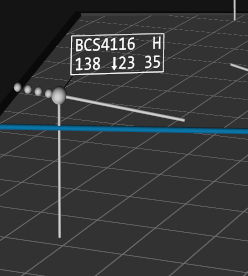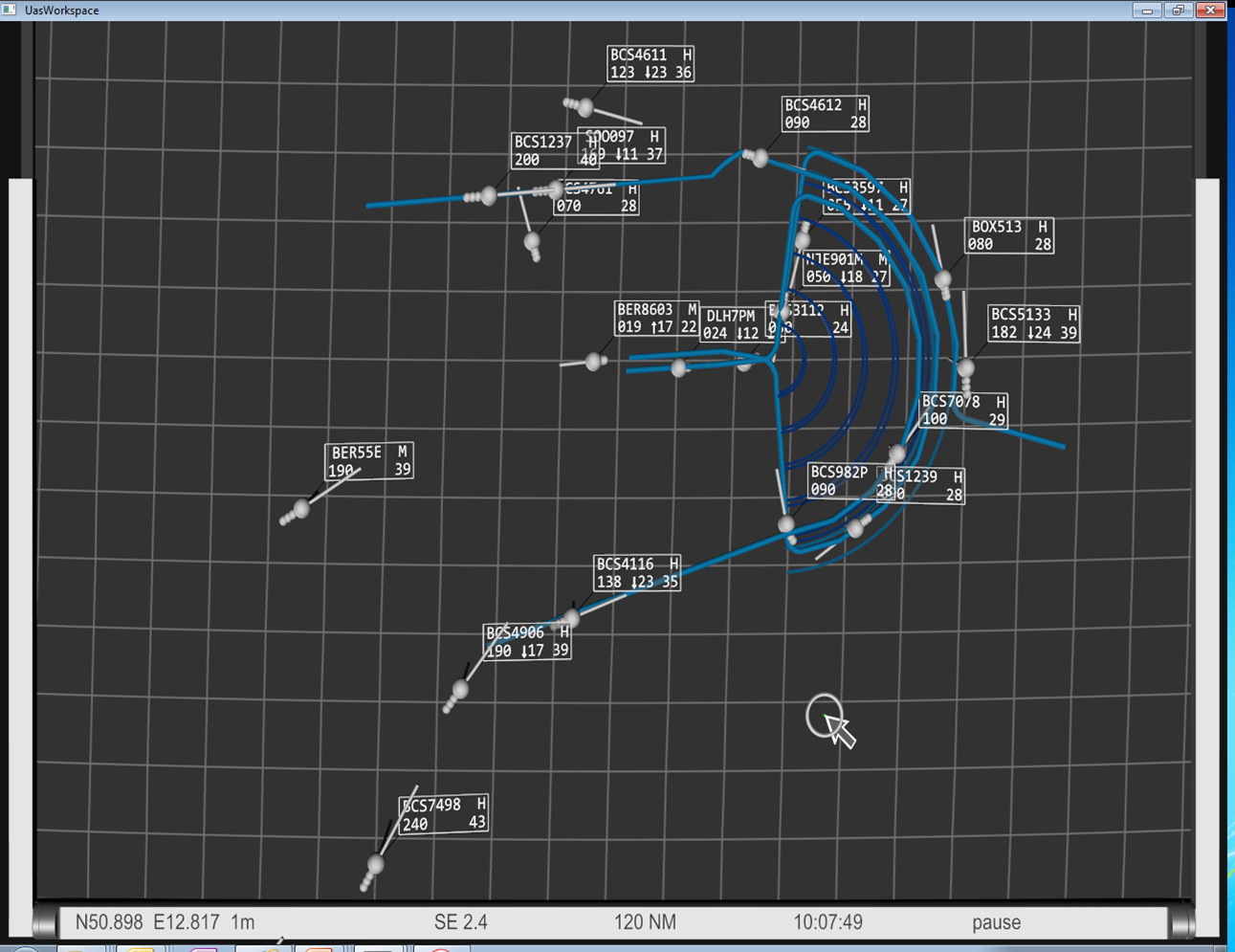ATC as a Game
 | Details |
|---|---|
| | |
| | |
| | |
| | |
| | |
| |
Abstract
In Air Traffic Control and Avionics in general 2D and 3D interfaces both have their qualities. Although irrespective of their preferability, introducing a whole new kind of system can lead to irritation and a struggle to adapt. Users may then leave new functionality unused. This thesis aims to investigate a such case within a stereoscopic ATC system developed by Airbus. Further, Gamification as a solution will be explored. Within this process, Game Design Elements will successively be derived from motivational theories, their respective aims and the concluded users' needs. The ultimate goal includes a decision on whether or not Gamification can be used, to address the mentioned Problem, and if so, a subset of elaborated Game Design Elements, which could be implemented into the System. Research is conducted in cooperation with Airbus, the Company responsible for the addressed System. In order to maintain readability, this system is referred to by Daedalus.System
 | The significant difference between Daedalus and most of the conventional systems is the user’s three-dimensional view. This results in a full six degrees of freedom, namely translation on all three axes, and rotation in all directions. Of course perspective view leads to an inaccuracy in scaling for the user. While there are still grids, which allow estimating distances, the values cannot be simply read out. Like many conventional systems Daedalus illustrates the aircrafts as abstract spheres, with a flight projection depicted as a simple line. Additionally the aircraft’s prior air route is indicated by smaller spheres dropped in a fixed amount of time. The amount of those indicators is limited, so when inserting a new one the last one is deleted. In order to represent the XY position even in perspective view, a perpendicular line is dropped from the aircraft onto the coordinate plane. Further this allows the user to immediately see whether the aircraft is moving up or down. Information about the aircrafts, like for an example their label, their exact position and current speed over ground can be displayed in a frame next to the aircraft and are always oriented to the user’s view. So they do not change while altering the perspective. |
 |  |
Motivational Aspects and Game Design Elements
Survey
In order to not only increase the basis of decision on the application of Gamification but also providing a data set to use in future research, tested aspects include different areas. As usual, demographic questions grant a general interpretation of the collected data. But they can also be relevant to the thesis’ prospect, as some research indicates different behaviour and reaction amongst men and women concerning GDEs. In consequence this led to covering the subject’s age and gender. Additionally, in order to separate by ATC working experience and the country, they work in, those aspects have been included as well. The rest of the survey is divided into two large parts. One part concerns general traits, usually referred to as Big Five or OCEAN model. They make a statement on a person’s tendency to be open towards ideas, conscientious, extraverted, agreeable and neurotic. The other large part of the survey concerns the subject’s experience with Games as well as the Bartle Player Type. As the ability to answer this part relies upon the question of whether one has played a Game before, this was asked in the previous section. If a participant negates the question, he skips all Game-related questions.Closing the survey on the 12th of February, seventeen subjects participated; only three of which were working in Germany and just two being female. However, the survey shows some interesting outcomes. Participants have an average age of 34.8 years and an average working experience of 10.2 years. All but one participant had played Games, which allows for a sample of sixteen subjects for the Game-related questionnaire. Furthermore, they exhibit quite an experience with Games, as 63% of Gamers have played a Game within the last month and also during their most active period 81% have spent at least ten hours a week, 44% even spent twenty hours a week or more playing Games, which can be seen as supportive, as users, who spend a large amount of time for gaming have been found to profit from Gamification to a larger extent. When it comes to favoured types of Games, Shooter seem to be the most popular ones with 69%, followed by Real Time Strategy and Simulation Games with 63% each. While all other Genres fall below 50%, Sport Games seem to be extremely unpopular with only one participant voting it. Inspecting the Player Types, given answers aggregate to the following average Type: 24% Killer, 53% Achiever, 59% Socialiser and 65% Explorer. In twelve out of those eighteen questions regarding Player Types the outcome has been quite explicit, as at least three quarters of the sample answered those questions in the same way. Both the relatively high amount of Achiever and Socialiser, as well as the tendency towards skill-related and achiever-ish genres, such as Shooter and Real Time Strategy, can be seen as supportive of the proclaimed Game Dynamics.
Conclusion and Prospects
Gamification can be a source of additional motivation, immersion and engagement. Many different elements have to be considered for use. However, some elements have been proven more effi cient than others. Generally, Points, Achievements and Leader Boards are a well-established combination of elements used for Gamification. This does not mean, they are the best solution for every environment. Essential, when using Game Design Elements is the way of interaction between them and the user. Mediators must be met in the right way. Feedback, for an example, must indicate a relation between the user’s action and the given reward. In the case of Daedalus, Points, Achievements, Badges, Leader Boards and Performance Graphs seem to be a rational choice regarding costs and expected value. Also the related user group has been proven suitable for the use of Gamification.There is much to be done following this thesis’ outcome. Design of Game Elements should be finished and they should then be integrated into Daedalus. As the survey conducted previous showed some interesting implications, this could be investigated further. For example, when testing the new gamified version of Daedalus and comparing it to its current state, participants could be asked a similar set of questions. This could grant yet another research basis on the use of Gamification with independent variables such as age, gender, but also experience with Games and the Player Type. Additionally, Links between the Big Five traits and Player Types could be invested within that context.